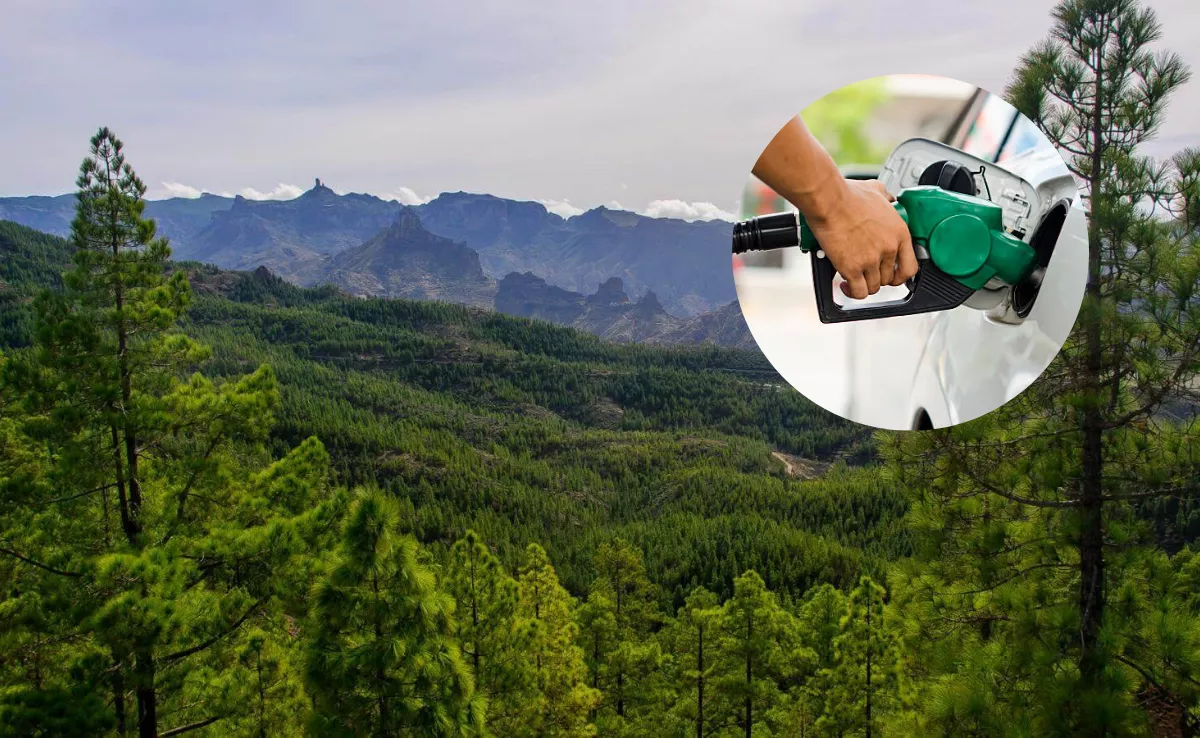
The “forest cent” has reopened the debate in the Canary Islands about environmental funding models.
While there are questions about why the idea of a “tourist ecotax” is rejected, yet this tax is approved, organisations such as Fénix Canarias emphasise that these are very different tools, with distinct objectives and uses.
It is a surcharge of €0.02 per litre of fuel intended exclusively for fire prevention and forest restoration, which the association claims would provide “stable and targeted funding” to maintain the management of the Canary forests continuously, in the face of droughts, increasingly destructive fires, rural abandonment, and biodiversity loss.
“When it’s possible,” Fénix Canarias explains via a thread on social media platform X, that after a major fire, there is often a injection of public resources, extraordinary hiring, and announcements of enhanced surveillance.
However, once the emergency passes and media focus dissipates, the funding also disappears. Many forestry interventions are carried out “when possible,” on an ad-hoc basis or only after emergencies, lacking the necessary planning and intensity to prevent new fires.
The main problem with this situation is that “forest management competes with other budgetary priorities — roads, ports, infrastructure — and almost always loses,” the association reminds us.
They cite as an example the funds invested in the Port of Granadilla in Tenerife, which cost €450 million, enough to finance half a century of continuous forest management to adapt the Canary forests to more natural and fire-resistant formations.
The forest cent appears as a solution to this lack of direct investment in the Canary forests.
However, the debate intensifies because the burden of the forest cent would primarily fall on residents who regularly refuel. In contrast, a “tourist ecotax” would only affect visitors.
But Fénix Canarias explains that they are distinct instruments due to their legal nature and purpose: the ecotax is a fee linked to the provision of a public service or the use of public domain goods — for example, staying in tourist accommodations — and cannot be freely allocated to general policies such as forest management.
Additionally, although it would be possible to devise ways to invest part of the ecotax in forestry, its collection would not necessarily be linked and would require extensive consensus and specific regulation, they add.
For the association, this tax does not replace other necessary taxes, such as the tourist ecotax, fair environmental taxation, or improvements in transport. However, it “allows us to start now, with a concrete, regulated tool designed to protect our forests.”
Thus, they emphasise that the forest cent cannot be used for anything other than fire prevention and forest restoration.
The collected funds will be directed towards measures such as the creation of nurseries and repopulation with native species; support for agroforestry management and combating rural abandonment; elimination of invasive species; reducing densities in replanted pine forests to improve biodiversity and reduce fire risk.
Moreover, it would also be used for protection against erosion, desertification, and runoff, as well as preventive forestry in areas with a high fire risk, with special attention to the urban-forest interface.
In practice, this tax would enable continuous funding for initiatives, rather than just reactions after each disaster.
From Fénix Canarias, they estimate that for every euro invested in preventive measures, between €4 and €7 can be saved in extinction and restoration costs after a fire.
The most common estimate of the cost for the user is around €1 per month per vehicle, which could be considered a modest investment given that the Canary forests are not just a scenic or tourist resource, but they also regulate the climate, store water, protect soils, prevent disasters, and sustain biodiversity.
For now, only Tenerife and Gran Canaria have requested to implement the forest cent, partly because they are the islands with an active forestry policy, technical structures, and management plans capable of effectively executing the collected funds, the association thread points out.
The Gran Canaria Council formalised the implementation of the “green cent” in June of this year after the summer ends.
The island entity estimates additional revenue of over €4 million annually, which will be used for prevention, reforestation, mountain agriculture, prescribed grazing, and combating erosion.
In the case of the Tenerife Council, the entity approved the tax on July 2 with the intention of implementing it by the end of the year. Vehicles designated for the transportation of goods and public passenger transport will be excluded.
















